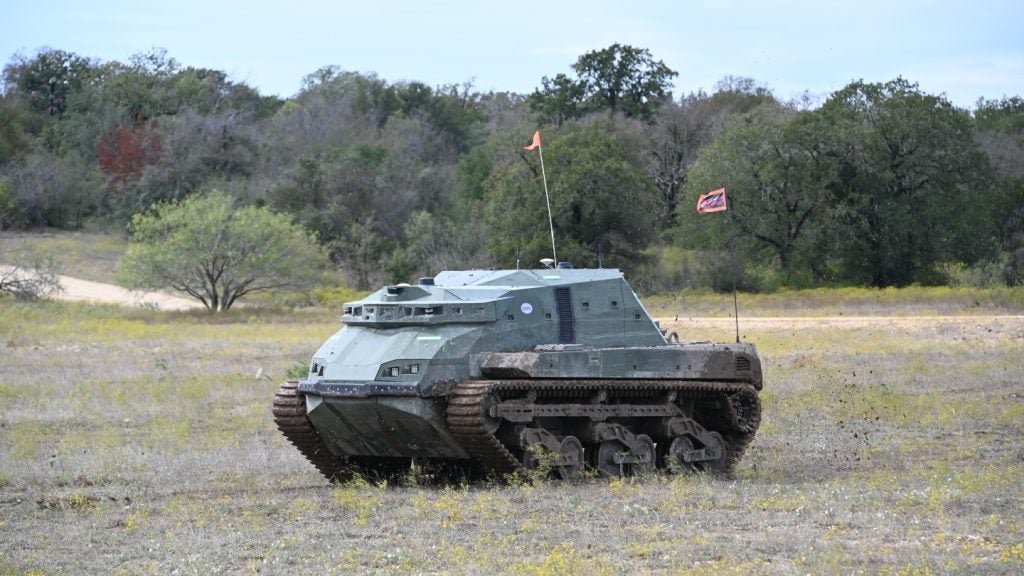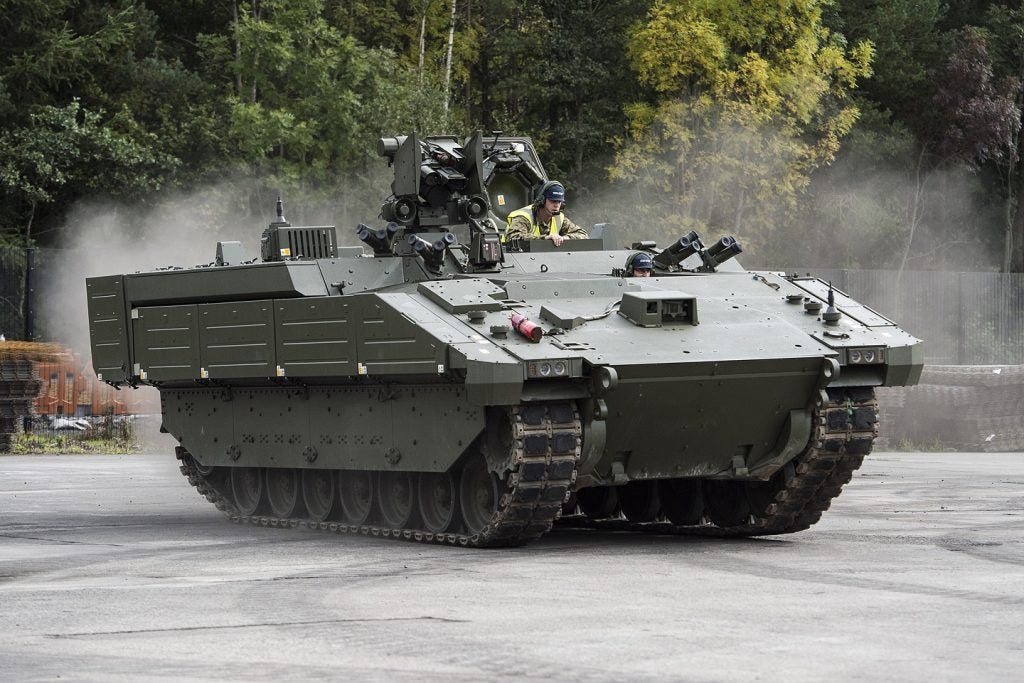
The MoD has raised the bar for systems of systems integration management by initiating a fundamental shift in perspective regarding collaboration between defence procurement agencies (DPAs) and systems integrators (SIs).
This new approach, supported and validated by industry leaders, provides for the development of future vehicles using a single, logically connected, cohesive and coherent architecture for maximum utility while enabling field command to derive the best logistically from military assets.
Interoperable open architecture (IOA) adoption also sets the stage for a more competitive procurement process.
Driven by clear economic imperatives, the MoD and SIs have had to change, accepting or divesting themselves of key responsibilities in the process. The MoD needs to spend more wisely to meet field requirements.
For prime SIs, delivery risks and other penalties have been increasing, forcing them to push down on tier-2 and tier-3 SIs and push back on DPAs to ensure there is enough ‘fat’ in a contract to mitigate risk. This downward economic spiral had to be stopped.
See Also:
The procurement process problem
The approach to defence procurement follows a common model in democratic economies. First, a major programme is defined, commonly around the need for a specific vehicle, aircraft or ship. Next, a tier-1 prime SI is selected to deliver the system. The prime SI is responsible for systems integration and timely delivery. Contracts are usually tied to through-life maintenance and management, and possibly training. With system lifecycles being extended to decades, such contracts are becoming an issue. DPAs and SIs struggle to sustain the supply chain for multiple proprietary vehicle designs.
How well do you really know your competitors?
Access the most comprehensive Company Profiles on the market, powered by GlobalData. Save hours of research. Gain competitive edge.

Thank you!
Your download email will arrive shortly
Not ready to buy yet? Download a free sample
We are confident about the unique quality of our Company Profiles. However, we want you to make the most beneficial decision for your business, so we offer a free sample that you can download by submitting the below form
By GlobalDataThere is limited or no commonality of subsystem supply or economy of scale opportunity for the DPAs across their multiple vehicle procurements, which drives up costs as each vehicle is essentially a one off.
The army’s concern
For military vehicle deployments, the nature of the threat is changing. The enemy is commonly asymmetric in nature and is adapting in the field to the high-tech capabilities of vehicles that have taken years to develop and deploy. By the time a new capability is fielded, the enemy has often already countered it.
The field commander cannot use his highly skilled engineers to adapt vehicle systems in the field without access to a system specialist from each SI for each vehicle. More importantly, he cannot integrate a capability from one vehicle into another, because each vehicle has a unique systems integration structure.
The MoD sought a more responsive and iterative process of integration, enabling it to deploy systems of systems that are ahead of the enemy’s abilities to change its modus operandi.
The MoD consulted extensively with industry and leveraged years of previous work from the vehicle systems integration (VSI) research programme and decided upon an IOA approach to address its system integration challenges.
Full-system IOA solution
The MoD’s IOA and acquisition approach encompasses a whole-system view. Def Stan 23-09 addresses integration for the entire electrical system, everything from the automotive control systems to power management, sensors, human machine interfaces, health and usage monitoring systems, weapons and C4I. In short, anything with a processor, software and communication paradigms between subsystems is included in the GVA.
Communication between two subsystems requires at least two common properties: the consumption and production of data. The MoD has assumed full responsibility for defining and maintaining a system data dictionary (SDD) of the complete vehicle defined on a subsystem-type basis (sensors, C4I, HUMSs, etc), a dictionary and vocabulary for communication between subsystems. This approach to systems architecture design is a fundamental change from the traditional interface control document-based approach, which defines the low-level protocol and messages characteristic of the stovepipe system architectures that have inhibited field responsiveness to changes in threat.
The MoD mandated the use of the object management group data distribution service (DDS) standard for the open-standard middleware for all data communication within the vehicle. Industry collaborators in the VSI research programme recommended DDS for the communication of data in a real-time environment as it ensures interoperability between independent subsystems when used in conjunction with the land data model.
DDS was originally architected to support data-centric development paradigms; the decision to implement their IOA through the specification of a data model leads directly to a data-centric development approach.
The beauty of this approach is that the SDD can be openly shared. Most of the land data model had by April 2011 been declassified, enabling ready sharing with the SIs, but also opening the door to collaboration between nation states – a publically stated objective of the MoD.
Def Stan 23-09 goes much further than the SDD and DDS mandate by promoting specific physical system interconnects, cable connection mechanisms, and HMI and power-distribution objectives. However, the SDD and DDS is the glue that will ensure interoperability between independent software and applications. DDS middleware is the bus all software systems must use for communication and control and DDS delivers the software data distribution function.
Demonstration of interoperability
At a VSI open day sponsored by the MoD at the Defence Academy in Shrivenham, just two months after the Def Stan was published, QinetiQ, Thales and Selex-Galileo and each had a booth with independently developed complex video systems featuring varying types of camera and joystick controllers, each with their own multifunction displays. The systems used DDS middleware from different suppliers, but because of the common SDD, within a few hours each could connect to the others’ cameras, controllers and displays. By interfacing DDS to each controller and using a common SDD, they were able to come together and integrate a working system over a standard Ethernet backbone in an extremely short timeframe. Plug-and-play has become reality in future military vehicles.
OA principles for success
The support material at the VSI day read: "VSI provides a coherent MoD-industrial approach to vehicle integration. It will: increase vehicle effectiveness; enhance adaptability, upgradability and reconfigurability in the face of ever-changing operational demands; and reduce whole life costs."
The SI opportunity
The MoD’s philosophical change in approach does not fundamentally change its procurement infrastructure. There is still a need for a prime SI to bring together the various tier-2 and tier-3 SIs and manage the systems integration of future vehicles. However, now the SIs will work within the architectural guidelines of the GVA.
As IOA-based systems are deployed, there will be a significant change in through-life maintenance procurement. Instead of ‘big bang’ upgrades, smaller maintenance and upgrade contracts can be initiated at much more regular intervals.
Instead of stifling innovation, the land data model enables rapid innovation and development outside the context of a specific vehicle programme, because now the SIs can have confidence that subsystems created according to the GVA specification can and will be viable in future military vehicles and their upgrades.
For the prime SI, a significant component of the integration function is defined and owned by the SI’s customer, the MoD. However, if it appears that a subcontractor will jeopardise the delivery schedule or contract deliverables, the prime SI now has the option and opportunity to seek alternative suppliers. Because the data model ensures interoperability, the SI knows integration will not be a major issue and can therefore focus on functionality, usability, price, durability and so on. The business benefits to industry of mitigating the risk of subcontractor failure for such huge programmes cannot be underestimated.
For tier-2 and tier-3 SIs, OA provides the freedom to invest resources in subsystem development. These SIs can be confident of successful integration into any number of future vehicle programmes regardless of which prime is awarded the contract. Competition will be tougher, but the cost of integration into proprietary (stovepipe) architectures will be removed. Since this is a non-returnable cost, everyone in the value chain benefits, right back to the MoD.
Even legacy subsystems can be brought forward into the GVA architecture. Legacy subsystems can be ‘wrapped’ with a GVA-compliant power adaptor and a data gateway to become an integral part of vehicles that use more recent IOA system-integration technology. This provides a low-cost legacy transition mechanism for both the MoD and SIs.
Through-life benefits
Perhaps the biggest savings will come in through-life maintenance and upgrade cost reductions and integrated logistics support simplification. GVA will create an increasingly open market for military vehicle components and subsystems, which in turn will drive a more competitive market and lead to cost reductions. Simultaneously, innovation will increase as suppliers work to differentiate their solutions.
Systems will also become easier to enhance because integrating new functionality is as simple as defining an extension of the data model. The logical data bus of DDS ensures that new data providers and consumers can be discovered dynamically by the system. A new function can select the data it needs from the data bus while adding itself as a provider of new sets of data to the vehicle environment. For full realisation of the benefits of a new function, existing subsystems may need to be enhanced. This is addressed in one of the key principles of the GVA as defined in Def Stan 23-09, which ensures that leveraging such functional enhancements should merely be a matter of a software upgrade.
The MoD has set a world-leading example of how to manage defence procurements in the face of new threats as the enemy becomes increasingly shrewd in leveraging their asymmetric capabilities. With GVA and Def Stan 23-09, the MoD has a procurement strategy for delivering military vehicles that are coherently designed, while maximising utility and enabling field command to get the best logistically out of its assets. The architecture empowers field command to plug-and-play to adjust to rapidly changing threat profiles.
Through GVA, the MoD has been able to respond proactively, successfully addressing procurement support requirements for military vehicles. What is most impressive, however, is that IOA will drive a more competitive procurement framework for future military vehicles, promising to reduce both the up-front and through-life costs of these systems of systems, while in turn increasing the opportunity for innovation and technology adoption in new subsystems.
This article was first published in our sister publication Defence & Security Systems International.





